Cold Winter Survival
Bushcraft techniques for survival in cold, winter environments

Survival in a very cold, winter scenario is in a league of its own, and can require significantly different methods than surviving in a mild or warm environment.
Winter environments are generally far more difficult to survive in than mild ones. You need hotter fires, stronger shelters, and bigger calories. You must stay dry, avoid sweating, and guard against the cold. The number one cause of death in the outdoors is not dehydration or starvation, it is simply exposure to the cold elements.
There are many reasons why winter survival is among the most difficult. You need to eat more food to stay warm, but there is less food around. You need more firewood to stay warm, which forces you to spend more time in the cold gathering it. Snow is constantly around, which makes the potential for things getting wet ever-present. There is less daylight which means less time to get things done and more time lounging in the cold dark shelter. The cold saps dexterity and makes tasks with the hands difficult. This is a good start to a list of challenges you will face in the frigid cold.
There are some prevailing rules to surviving the cold, such as: Don't sweat! Don't sleep directly on the ground! Stay out of the wind! Stay dry! Rules like these become common sense once you've spent some time in a cold, winter environment.
Priorities
First of all, shelter goes from the bottom of the priority list to the top. It only takes a few hours to die from exposure to cold elements while it takes a few days to die from dehydration. While you can usually get by alright without a decent shelter or even no shelter in mild environments, having a solid shelter that blocks wind and precipitation and holds in warmth is essential to surviving the cold.
Food also jumps the priority in winter survival. Your body burns more calories in a cold environment because it must produce heat to stay warm. While you can survive several weeks without food in a warmer climate, you will need significantly more in a cold climate in order to keep your core body temperature cooking. You can mediate this need for food by conserving what heat you already have with proper clothing, shelter, and a good fire.
Fire stays near the top of the priority list, superseded only by shelter. The heat that a fire provides is critical to keeping your body warm enough to survive the bitter cold, and good shelter is needed to hold in that heat. In a well-insulated shelter, such as an igloo, even a very small fire can provide a lot of heat. If more heat is produced than is allowed to escape, then in a short time your shelter should be quite cozy. Eskimos traditionally use small oil lamps called kudliks to warm their igloos.
Water, which is usually at the top of the priority list, falls to the bottom. In a serious winter environment you will usually be surrounded by snow or ice, and thus have an infinite supply of drinkable water. In a mild winter scenario there may not be much snow or ice around, in which case water jumps up the priority list again.
Maintaining Core Body Temperature
Maintaining a good core body temperature is essential to preventing hypothermia. If you start to feel your core body temperature drop, you should immediately take action to reverse it. Be it exercising, making and getting near a fire, "cuddling" with someone, drinking warm water, or just getting out of the wind and huddling in a ball.
There are only three ways to keep your body warm: calories, fire, and insulation. Burning calories provides an internal heat source, fire provides an external heat source, and insulation prevents that heat from escaping. This is pretty simple math. If one of the sides of this "body heat triangle" is lacking, for example there is no fire, this will need to be compensated for by strengthening the other sides of the triangle, for example adding extra insulation. Staying warm in the winter does not need to be much more complicated than this, though other factors can play a role.
Staying dry in a cold scenario is essential. Water sucks heat out of your body 25 times faster than air. Wet and cold is more dangerous than dry and colder. Rain precipitation is usually more of a problem than snow because it gets you wet, while you can often stay quite dry in a heavily snowed environment if it's very cold.
One golden rule to always follow in cold climates is DON'T SWEAT! When sweat dries on your skin it leaves a film of salts and electrolytes that pull heat out of the body and causes feelings of serious chills and coldness. If you have already sweated, rinse it off with water or rub snow all over your body if you have to. You do not want sweat on you when it's cold, period.
Whenever you feel cold, there is one thing you can always do to create heat: exercise. Physical work is one of the best ways to warm up the body in a quick-fix. Squats are especially effective. A milder technique is to just squeeze or flex all of the muscles in your body at once, hold for about a second then relax for about a second, and repeat indefinitely until warmed up. Be careful though not to burn calories that you cannot replace and NEVER start sweating!
Winter Shelter
When searching the surrounding landscape for a good winter shelter location, find a place where cold air is not sinking and high-winds are not hitting. Never stay at the very bottom of a valley or the very top of a ridge.
Find a place where natural wind-blocks exist such as large rock formations or dense trees. Cove-like places are great because they block wind coming from almost any direction. Construct something that will block any remaining wind.
Look for a location with a good supply of firewood nearby. Ideally you will also want to be near food sources such as animals and wild edibles if possible. With snow on the ground water is usually not a concern, but if it is then a good shelter location will always have a water source nearby. If possible, establish your shelter in direct sunlight which provides extra heat.
If you are lost and want to be rescued, find a location that will have as much visibility to the sky as possible while still providing adequate protection from the elements. Make a fire that is visible to low-flying air traffic and have a large pile of green vegetation ready to throw on the fire to create thick smoke if you notice signs of rescue coming such as helicopter noise.
Snow makes great insulation with all of its air space and makes excellent shelter material, and is often abundant in the winter. It can be built up into walls easily and then a thick layer of evergreen branches laid on top for a roof.
Digging a hole into the side of a large snow drift makes a great winter survival shelter called a "snow cave". If a pile of snow large enough to dig a snow cave into is not present, it may be possible to build one or at least increase the size of a smaller one by piling snow into a mound, then digging a small cavity into the side. It should be comfortable enough to spend a night in, and should be set up to have a fire, if only a very small one, either inside or at the entrance.
Snow Cave Shelter

Another relatively easy to make snow shelter is called a "snow trench". If the snow is at least a foot deep, you can simply dig a trench down into it for which the human body can lay in. Make it about 7 feet long, 3 feet wide, and deep enough to fully submerge you below the surface of the snow and lay comfortably in. You can use the dug out snow to build up the walls around the edge.
Lay evergreen boughs on the bottom to keep your body off the cold ground and more across the top to create a roof. Snow can be piled on top for extra insulation. Leave a small opening at one end for you to crawl into.
The snow trench is good for a quickie one-night shelter or something to get you out of a storm fast, but obviously is not ideal for a long-term shelter.
Snow Trench Shelter

Read more about shelter types on the "Shelter" page.
In a cold environment, you should never sleep directly on the ground or the snow. It will absorb heat from your body via conduction. Always make some kind of insulated bed using plant matter such as leaves, pine needles, or grass, or lay down extra gear you have.
Instead of building a fire directly on snow, or even wet ground, which will likely put out any fire you can start, set a layer of green, living wood as a platform for the fire to burn on. It will still melt the snow and burn down into it over time until it reaches solid ground. This can potentially be a method for digging a hole in the snow, for example to create a shelter space. The top of a hole burned out this way can be covered with evergreen branches for a roof.
A common mistake is to lose items in the snow, either by sinking down into snow or being covered by a light snowfall. A good trick to avoid this is to stand items up, such as an axe, instead of laying them in the snow. Hang things on branches, or lay down a sheet of some kind and set your items on top of that, instead of directly on the snow. Keep smaller items in a bag and don't let them get spread around. Some common sense practices like these will prevent a potential disaster such as losing fire-starting equipment.
Food & Water
Food digestion creates warmth in the body, because it burns calories. Simply having some food in your stomach can be the difference between feeling cold and feeling warm. It is often a good idea to eat at night instead of the day in order to get that extra warmth through the cold nights. Of course if food is plentiful, eat all day long!
Hydration plays an important role in maintaining a healthy core body temperature. The cells of the human body need to thermoregulate by shrinking and expanding, and this requires water. Otherwise, you can be sitting right next to a fire with a lot of clothes on and still feel cold if you're dehydrated.
Generally, people do not feel as thirsty in cold environments as they do in hot ones. One may even have to remind himself to drink water instead of relying on signs of cravings.
Finding water in a winter environment is usually easy, just grab some snow or ice. Food on the other hand can become very difficult as both plants and animals are hibernating through the winter. There will still be some animals around such as deer and turkeys, and some edible plants such as berries. What is available will depend on your location.
The cambium layer of most trees can be eaten in desperate situations. Cambium is the thin, soft layer between the bark and the wood of a tree. There will likely be an abundance of trees in most winter environments and thus an infinite supply of bitter, hard-to-gather "food". Though barely palatable, it does provide nutrients and can potentially sustain a person indefinitely.
One benefit of being surrounded by evergreens is the luxury of pine needle tea. Simply let some pine needles steep in a pot of hot water for a few minutes and you have a tasty beverage that also provides Vitamin C and boosts the immune system, in a climate where the immune system is already at a disadvantage.
Eating Snow
It is often said "Don't eat the snow!" in fear of it lowering your core body temperature. While it is best to melt and warm the snow in a pot on a fire, it is much better to eat the snow than to get dehydrated.
Especially if you are active, eating snow can be an excellent method to consume water and can even prevent you from overheating and sweating if you are working hard. Be aware eating snow can occasionally cause cold sores in the mouth.
If you are going to be melting down water over a fire, go for ice rather than snow. Ice is much denser than snow and gives more bang for the buck. Plus, ice melts more efficiently. When you try to melt snow in a pot it can often create air space in the bottom of the pot preventing the snow from melting and causing the pot to overheat, burn and warp. If you only have snow to melt, pack it into snowballs and melt those.
Be careful eating old snow, or snowfall that is not fresh within a few days. Mold or fungus can begin to grow on the top of snow, especially in the spring season when it starts to warm up. It will discolor the snow usually to a pinkish or greenish hue. Eating this can make you seriously ill. To avoid it, simply scrape off the top few inches of the snow and get the fresh snow that has been buried. In fact, it is a good habit to always get your drinking snow from under the surface.
Winter Weather
In a survival situation you are usually either dealing with weather or preparing for it. This goes double in the winter, where your life depends on staying dry and warm. Strong winds, precipitation, cloud cover, blizzards, blinding sun... an outdoor survivalist keeps a close eye on current and foreseeable weather and reacts accordingly.
Survival expert and co-host of the reality tv show 'Dual Survival', Cody Lundin, once said, "Cold, strike one. Wet, strike two. Windy, strike three - you're out!" It is essential to remember that it is not just the low temperature that is the concern in cold winter environments, but also wetness and windiness are just as important and sometimes more important factors to the threat of hypothermia and death from exposure than just the temperature.
Wet and cold is usually more dangerous than dry and colder. Both wind and water suck heat out of the body many times faster. We all know how much colder the "wind chill factor" makes it feel; that can literally mean the difference between life and death.
Pay attention to the weather and the amount of cloud cover. A night of clear skies will be colder than a night overcast with clouds, because the clouds hold in the warmth from the day. This is one reason extremely hot deserts can also get very cold at night. With a lack of clouds and moisture in the air, the heat quickly dissipates. Ideally, you want clear days and overcast nights in a cold winter scenario. The sun warms up the environment during the day and the clouds hold it in at night. Of course, this usually is not what happens.
Clothing
You should always dress in layers of varying insulative value in the cold. This way you can maintain a consistent body temperature by adding and removing layers at will. This comes into play a lot as physical labor demands, swinging temperatures, and precipitation will cause you to add and remove clothes on a regular basis. As soon as you start to feel hot, remove layers until you feel comfortable, and as soon as you start to feel cold, add layers.
When it comes to winter clothing material, a lot of survival enthusiasts swear by wool. It keeps 80% of its insulation value even when soaking wet, and is generally inflammable so you can get real close to a fire without concern of sparks setting you ablaze. Compare this to cotton which has great insulation value when dry, but becomes almost useless when wet and is also highly flammable. Polyester, spandex, and fleece are decent.
When traveling in deep snow, it is a good idea to construct snow shoes of some kind. There are many ways to do this, ingenuity is your best tool. Basically, anything that will spread the weight of your footprint over a larger area will work. This prevents you from sinking into the snow, which makes travel far more laborious and time-consuming.
A common method for improvising snow shoes is by tying branches together to form a kind of platform which you place on the bottom of your foot and tie securely around your foot and ankle. There are essentially infinite ways to make snow shoes and will depend on what resources you have to work with. A little creativity goes a long way.
Frostbite
The hands and the feet are usually the first parts of the body to become affected by frostbite, which is literally the water in your body freezing, killing the flesh. Fingers and toes are especially susceptible, and often parts of the face like the cheeks and ears are some of the first to be hit with frostbite.
The feet give off very little heat and thus need extra attention. Generally, boots alone will not provide adequate insulation against freezing cold. Wiggle your toes often to ensure frostbite is not beginning to set in, this also gets the blood flowing and burns calories in the toes which warms them.
In addition to snow shoes made for traveling, it may be a good idea to develop something that will provide extra insulation to your feet as well. This can be done by wrapping any extra insulative material you have around your feet or shoes. You may need to sacrifice some clothing from other parts of the body, such as the legs, to ensure frostbite doesn't touch you.
Often times people don't notice they have frostbite until it's too late, especially on the feet. You cannot feel frostbite, it becomes completely numb because the flesh is dead. Don't be someone who takes off their shoes one evening to the horrifying discovery of a foot half-blackened. Stay vigilant in the wild, especially in the winter.
Snow Blindness
When snow covers the ground and everything around you looks bright white, snow-blindness becomes a real threat. The snow reflects sunlight so well that it can cause sunburns in the eyes and serious vision impairment which can last for several days, and in severe cases cause permanent damage.
There is a pretty easy trick to prevent this, you just need to lessen the amount of light that enters the eyes. Grab some fabric, preferably black or dark colored, and cut two small slits to see out of, then secure over your eyes.
Snow Blindness Goggles

White Out
Another situation with a vision impairing effect is a "white-out", which is snow and weather that prevents you from seeing landscape features. This can cause disorientation and get you lost if you're traveling. A compass is about the only thing that will give you any bearings in a complete white-out.
There are stories of people traveling toward a mountain in the distance, only to find a few steps later that it was just a small rock. In a white-out it is usually best to take shelter and bed-down instead of attempting to travel without any bearings.
Winter Survivorman
There was one 'Survivorman' episode where Les Stroud was surviving in a very cold, winter environment, and while traveling he had to stop and make camp for the night. It was to be a one-night-only campsite and Les opted to do it with no shelter whatsoever.
Instead, he constructed a large fire, long as a man, and gathered a massive pile of firewood to keep it raging all night long. He said the trick to this winter survival technique is that once you think you have enough firewood to last the whole night, gather 5 times more.
This shows it can be done, but obviously this method is not practical for a campsite where you will be residing for multiple days. Sometimes, at the end of the day when you're losing daylight fast and you just need something to hold you over til morning, it may be the better option when you must choose between either fire OR shelter.
Heating Earth
Heat from a fire quickly dissipates, but a great way to store that heat and transfer it to your body is by warming up earthen material. Dense earthy matter like stone and metal store heat for hours, and will transfer that heat to the human body if placed close enough.
A good trick to keep you warm while you sleep during the night is to burn a fire on the spot where you will sleep. This heats up the ground which will stay warm for several hours. Right before you go to sleep, scrape the fire aside with a large stick and lay down some insulation such as pine needles and sleep on that, or you can sleep directly on the warm ground which is normally a big no-no in cold scenarios.
A similar trick is to heat rocks next to a fire and then put them next to your body. Keep a rotation going with some rocks in the fire and some on your person so you have a continuous supply.
Be careful when heating rocks next to a fire, they can break and sometimes throw shrapnel if heated too quickly. Avoid rocks that come from wet sources such as stream beds. Any water in the rock will make it significantly more likely to explode when heated and send dangerous pieces flying that could take out an eye. Heavy, dense rocks are the best for heating.
Summary
Surviving in a rough winter environment requires many additional bushcraft techniques that serve to deal with the cold and its effects. You do not drop bushcrafting methods from milder environments and you gain a whole assortment of new ones.
The number one cause of death in the outdoors is not from dehydration, starvation, injury or animal attack. It is simply from exposure to cold elements. This shows how harsh and difficult it can be to survive, let alone thrive, in a cold winter environment.
On the other hand, mountain men have been doing it for many years, and if they can do it, then it shows that with the right knowledge, skills and attitude, not only will you survive in a harsh winter environment, but you may even thrive.
Continue to Finding Water...
Leave A Comment
Add Comment
Wilderness
Survival Gear
Fixed Blade Bushcraft Knife
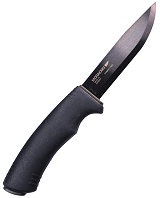
Ferrocerium
Rod Firesteel

550 Paracord
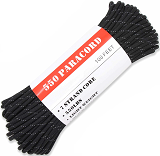
Stainless Steel Canteen
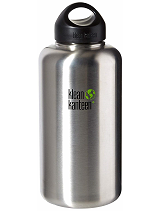
Waterproof
Tarp

Multitool
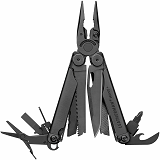
Stormproof Matches
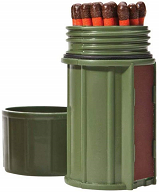
Folding
Hand Saw
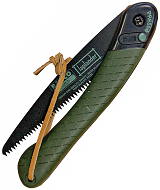
Stainless Steel
Pot
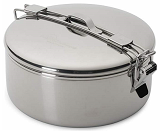
Waterproof
Rain Poncho
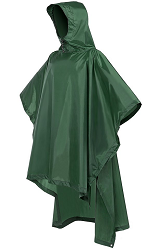
Water
Purification
Tablets

Kukri Machete
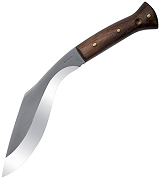
Magnifying
Lens Firestarter

Duct Tape
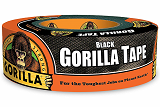
Compass
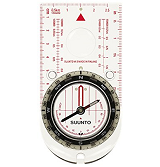
Water Filter

Magnesium
Stick Firestarter
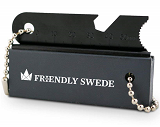
Blade
Sharpener
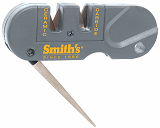
Firestarting
Tinder
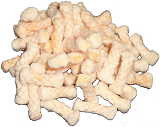
Fishing Kit
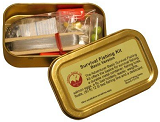

Survival Gear
Fixed Blade Bushcraft Knife

Ferrocerium
Rod Firesteel

550 Paracord

Stainless Steel Canteen

Waterproof
Tarp

Multitool

Stormproof Matches

Folding
Hand Saw

Stainless Steel
Pot

Waterproof
Rain Poncho

Water
Purification
Tablets

Kukri Machete

Magnifying
Lens Firestarter

Duct Tape

Compass

Water Filter

Magnesium
Stick Firestarter

Blade
Sharpener

Firestarting
Tinder

Fishing Kit


Comments (2)
Nice article. Going to test aa few of these tricks out shooting some photography this holiday.
Much more complete than other longer articles on the subject ! Thank you very much ...